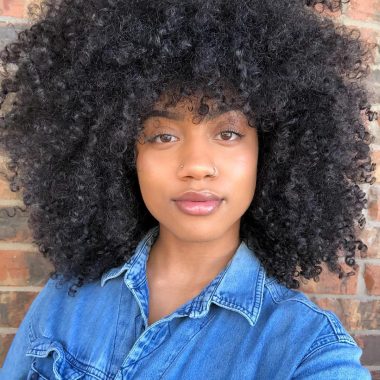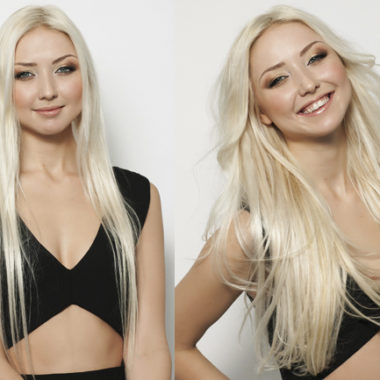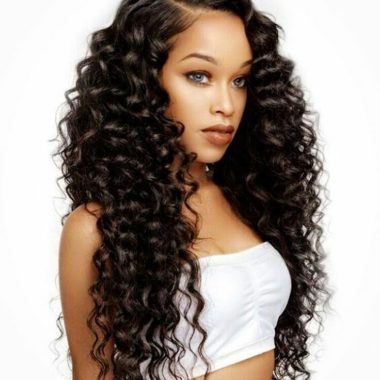While I do love getting braids (I’ve tried out everything from box braids to straight backs), sew-ins are the one style I find myself returning to time and time again. IMHO, if you’re trying to grow out your hair or you just want to give your natural hair a break, you can’t really go wrong with a sew-in. But if you’re thinking about switching up your look and getting a sew-in for the first time, I’m sure you have a ton of questions—I definitely did before my first appointment. That’s why I reached out to Julius Nash, Mayvenn Hair certified stylist, to walk you through every single thing you need to know before getting your first sew-in weave, ahead.
What is a sew-in?
First things first: Sew-in weaves are a process where your natural hair is braided down into cornrows, says Nash, and a needle and thread are then used to sew down hair extensions onto the braids. With a sew-in, your natural hair is tucked away, so it requires very little upkeep. It also gives your natural hair a break from the damage of day-to-day styling (think: heating, brushing, and product buildup), so if you’re trying to grow out your hair, a sew-in is a great option.
How long does a sew-in take to install?
This totally depends on your hair length, texture, and the type of sew-in you want, but it’ll usually take between three to six hours to install (translation: you’ll def want to bring snacks to your appointment). BTW: Sew-ins are typically quicker to install than braids, which can take anywhere from four to eight hours (depending on the style, obvs).
How long does a sew-in last?
If you’re showing your sew-in love and taking proper care of it—more on that in a bit—it’ll last up to six to eight weeks, says Nash. If you try to keep it in longer than that, you’re risking damage to your hair and scalp (aka irritation, excess oil buildup, and breakage). The easiest way to avoid any irritating side effects? Keep up with your appointments.
Do sew-in weaves damage your hair?
They can if they’re not properly installed or you don’t take care of them. According to Nash, the best way to prevent damage is to make sure you go to a reputable stylist and that you feel comfortable enough to let them know if you’re experiencing any tension from the braids and/or the sewing in of the extensions. You’ll also want to ask your stylist plenty of questions about upkeep—the more info you have, the better.
How much is a sew-in?
This depends on a number of factors, including where you are in the country and who your stylist is. Generally speaking, though, the install service usually ranges from $100 to $600. And that’s not including the cost of the extensions, which can fall anywhere between $80 to $600.
What’s the best weave for a sew-in?
There are two routes you can go when it comes to choosing a weave for your sew-in: either synthetic hair or human hair.Both come in a variety of textures (straight, wavy, and curly), but they give you totally different options in terms of styling. Since synthetic hair is made up of—you guessed it—synthetic materials that just look like hair, you can’t heat-style or color it without damaging it. That said, synthetic hair is way cheaper than human hair and will usually cost you around $80. Good-quality and long-lasting human hair (which you can style and color—just like your natural hair) will likely set you back at least $200.
Can you wash a sew-in?
Nash suggests always going to see a stylist to get your sew-in professionally washed (for the record, you only need to wash your sew-in once every two weeks), but if you absolutely have to wash it yourself, you’ll need a gentle, sulfate-free shampoo and conditioner. Nash suggests washing from your ends to your roots, using a wide-tooth comb or a paddle brush to distribute the product.
You’ll also want to make sure your weave and the braids underneath it are completely dry before styling your hair. If you don’t let the braids underneath your sew-in dry completely, sometimes mildew or fungus—I know, gross—can grow on certain parts of the scalp, leaving you with tons of irritation, says Nash. As a general rule of thumb, always consult with your stylist during your installation so they can tell you how to best upkeep your sew-in. All extensions are different and require specific maintenance.
The verdict
Even though they’re on the pricey side, IMO, sew-ins are definitely worth it. Not only are they cute, but they also allow your natural hair to grow long and healthy. But hey, if you’re still on the fence, just chat with a stylist and get a consult before you make any decisions.
Article Credits:
https://www.cosmopolitan.com/style-beauty/beauty/a32288488/sew-in-weave-hair-guide/





Superb, what a weblog it is! This blog provides valuable information to us, keep it up. Natassia Winny Lobell
Natassia,
thank you sooo much for your feedback. We plan to regularly bring the newest and most helpful beauty tips to our community. Please look forward to more blogs to come.
Best regards,
HAIROLOGY EXTENSIONS
The Other Science